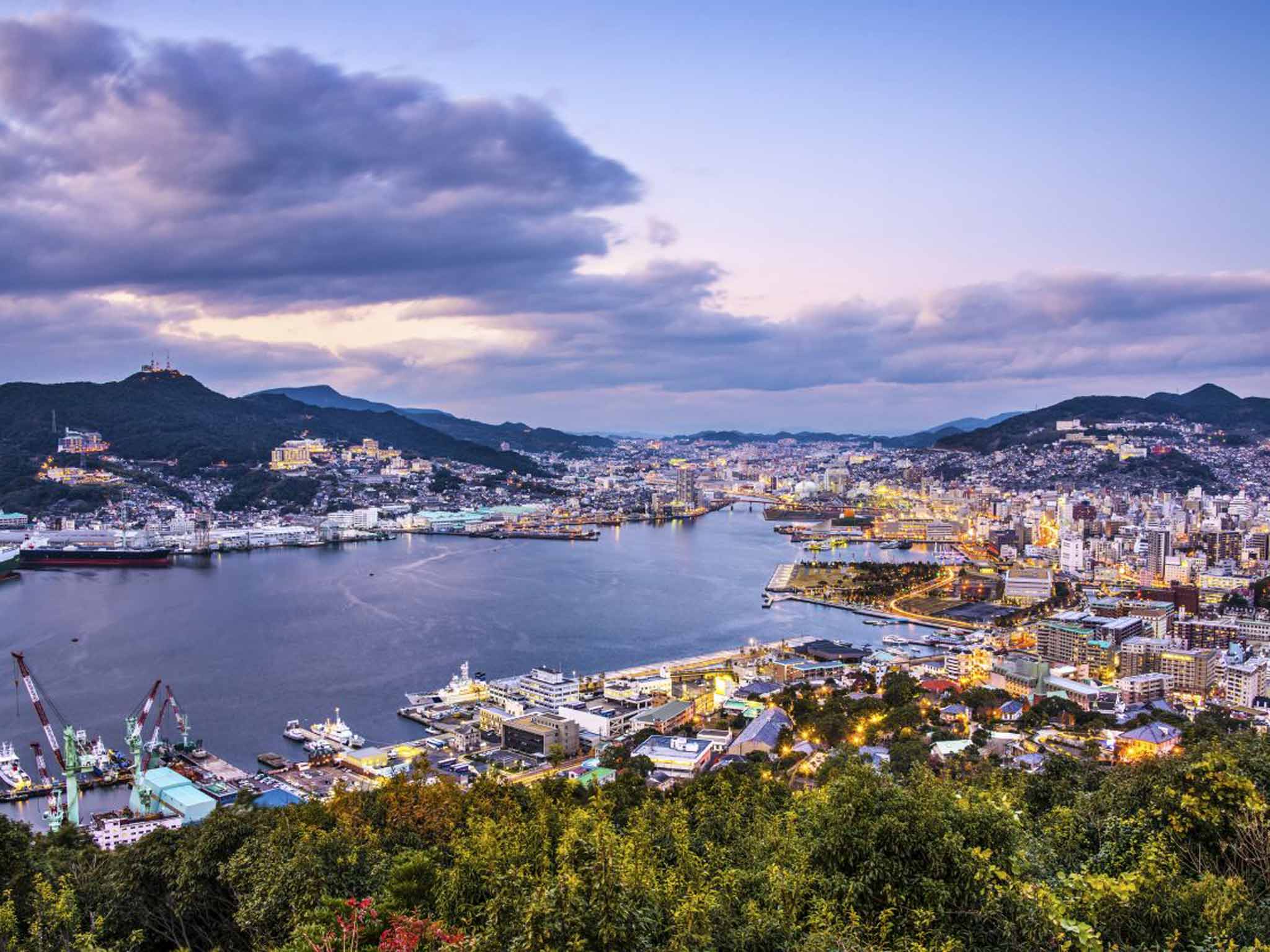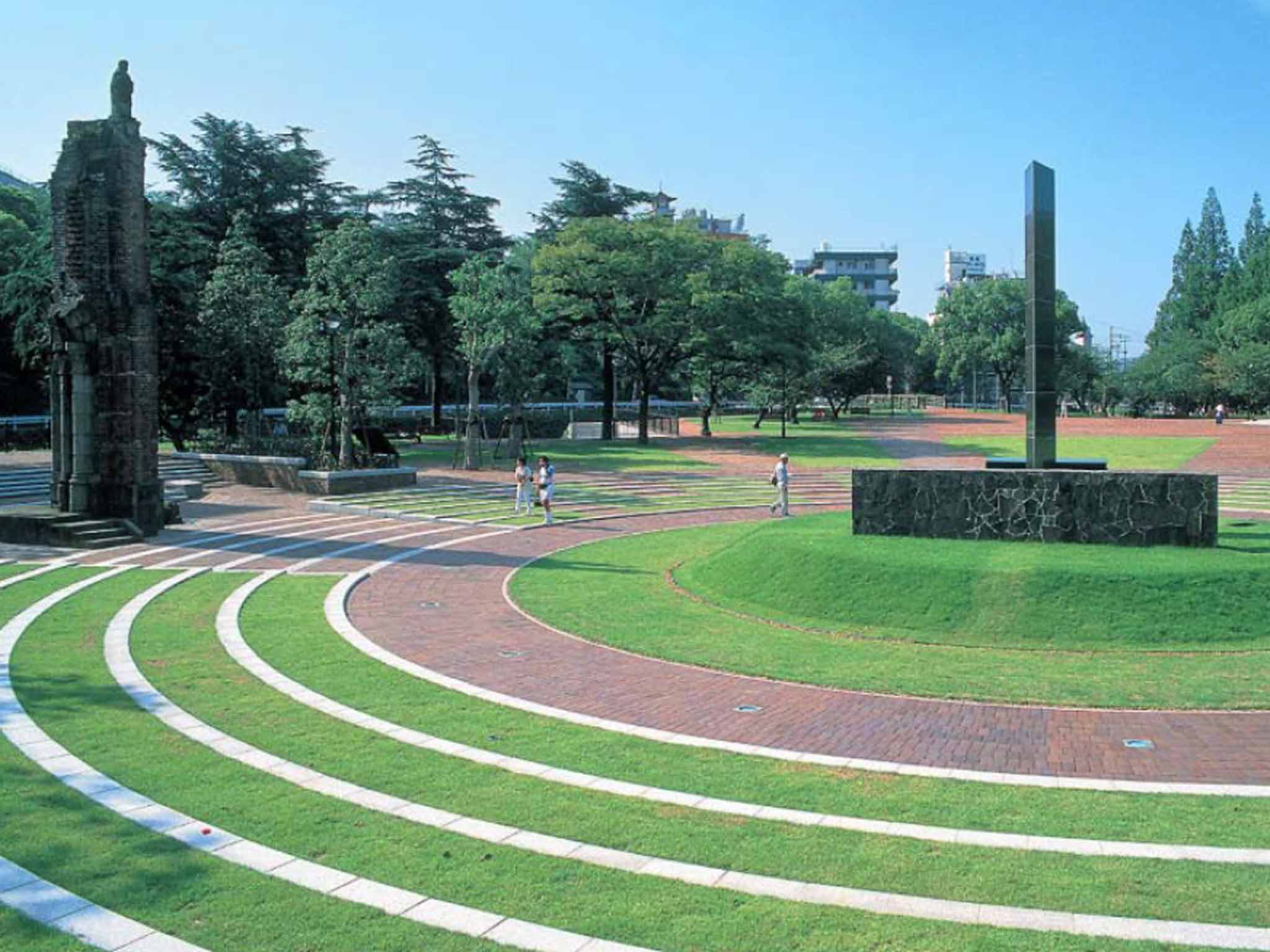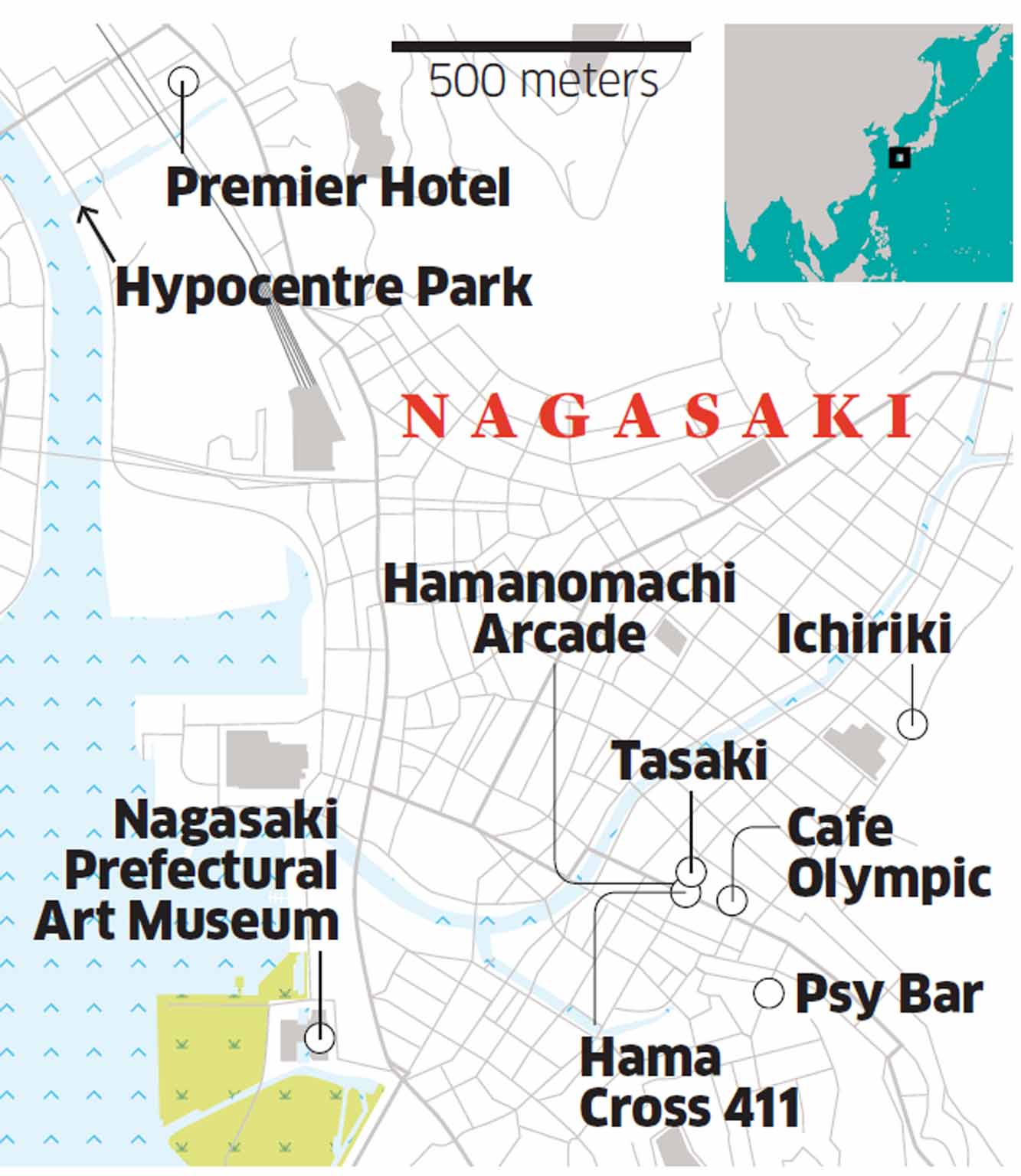The Independent's journalism is supported by our readers. When you purchase through links on our site, we may earn commission.
Nagasaki: A dashing metropolis that has shown remarkable resilience
It's 70 years since the atomic bomb fell on a city that honours its past while embracing its future, says Chris Leadbeater

Your support helps us to tell the story
From reproductive rights to climate change to Big Tech, The Independent is on the ground when the story is developing. Whether it's investigating the financials of Elon Musk's pro-Trump PAC or producing our latest documentary, 'The A Word', which shines a light on the American women fighting for reproductive rights, we know how important it is to parse out the facts from the messaging.
At such a critical moment in US history, we need reporters on the ground. Your donation allows us to keep sending journalists to speak to both sides of the story.
The Independent is trusted by Americans across the entire political spectrum. And unlike many other quality news outlets, we choose not to lock Americans out of our reporting and analysis with paywalls. We believe quality journalism should be available to everyone, paid for by those who can afford it.
Your support makes all the difference.There is something vastly humbling about standing in the precise place where a nuclear explosion occurred. It does not take me long to find the Hypocentre Park in Nagasaki, but it takes me a few minutes to come to terms with the magnitude of this location.
Right here, at 11.02am on Thursday 9 August 1945, an atomic bomb did its dirty work. In doing so, it effectively ended the Second World War, while reaping a body count that may have totalled 80,000.
This was, perhaps, the most decisive moment of the 20th century. And yet it is also treated as something of a footnote. The tale of Japan's downfall in the summer of 1945 usually focuses on the destruction of Hiroshima – the victim of the first A-bomb dropped in anger, three days earlier on 6 August. That unprecedented move caused the deaths of around twice the number of people, and came wrapped in the stark shock of the new. Nagasaki was "just" the sequel. Yet the 70th anniversary of the event will be remembered just as solemnly as ever next Sunday during the city's yearly Peace Memorial Ceremony.
Those who visit Nagasaki, Japan's most westerly city (pinned to the left flank of Kyushu, the third largest and most south-westerly of the four main islands of this archipelago nation), will encounter plenty of landmarks relating to the bleak events of seven decades ago. The atomic bomb sites are tucked two miles north of the harbour – where the blast was partially contained by the ridges of the Urakami Valley (this spared some of the city to the south). The Hypocentre Park (in the Matsuyamamachi area) identifies the exact ground zero with a simple black column of granite – while a towering statue of a mother cradling her dead child needs no explanation. Adjacent, the Peace Park also uses sculptures and installations to make its quiet point, notably a huge bronze figure crafted by Japanese artist Seibo Kitamura – which gestures at the heavens.

Yet, visitors will also unearth a place that has shown remarkable resilience, emerging from the rubble and ash as a dashing metropolis where intriguing restaurants, galleries, shops, and bars abound.
Most notable as a symbol of resurgence is the Nagasaki Prefectural Art Museum (00 81 95 833 2110; nagasaki-museum.jp; admission free, exhibitions Y400/£2) – a dramatic cultural space of glass and light which opened on the waterfront in 2005 and was designed to the vision of Japanese architect Kengo Kuma. August 1945 may have defined Nagasaki, but August 2015 is alive and well in its maze of streets.
Unpack
The Premier Hotel Nagasaki (00 81 95 821 1111; bestwestern.co.jp), opened in 1990, and salutes Nagasaki's more distant past through lacquer panel paintings in the lobby of Portuguese ships arriving in 1543 (the first European vessels to reach the city). But its chief appeal is the view it proffers – south to the port and the railway station, where sleek shinkansen (bullet) trains slip silently out of town. Doubles from Y15,000 (£78), room only.
Think local
To understand why Nagasaki was a target in 1945, you have to peer into the 19th century – and the era that made it a whirring cog of Japanese industry. The most obvious relic of this time is Hashima, an island lurking nine miles south-west of the city. It was the portal for under-sea mines which were in operation between 1887 and 1974. Its abandoned staff quarters are so evocative that they inspired Javier Bardem's villainous lair in the Bond film, Skyfall. Gunkanjima Concierge (00 81 95 895 9300; gunkanjima-concierge.com) offers two-hour visits with ex-miners as guides, from Y3,600 (£18.50).

Eat
Hidden in Suwamachi, a district of Shinto shrines and visible heritage which survived the bomb, Ichiriki (00 81 95 824 0226; ichiriki.jp) serves fare which reflects the ingrained effect of Dutch and Chinese merchants on this key port – dishes are as varied as chicken pie, braised pork and sweet red bean soup. Set lunches Y2,500 (£13).
Café Olympic in Hamamachi (Hamamachi 8-33; 00 81 95 824 3912) deals in 21st-century fare, including the pork katsu curries that are so popular in Japanese restaurants in the West (Y1,350/£7).
Drink
Step uphill into the Maruyama district and seek out Psy Bar (Nishikoshima 1-3-2; 00 81 95 820 5288) – a watering hole slotted into a low-slung home where centuries seem to mix. You have to remove your shoes to enter, but you can sip glasses of Japanese Suntory whisky for Y600 (£3.15) and decidedly non-local (but fine) caipirinhas for Y900 (£4.50).
Spend
Once you've dipped into Nagasaki's past, venture into its present. Pitched at the heart of the centre, the Hamanomachi Arcade (00 81 50 3525 6127; hamanmachi.com) is the city's main retail space – a grand mall boasting 700 stores. Here, Hama Cross 411 (00 81 95 822 3123; hamacross411.jp) deals in of-the-minute fashions and chi-chi bags, while Tasaki (00 81 95 825 5521; tasaki.co.jp) is a popular jeweller that specialises in pearls – pale bracelets and delicate necklaces.
Don't miss
The Nagasaki Atomic Bomb Museum (00 81 95 844 1231; nagasakipeace.jp), in Hiranomachi, picks through the wreckage of 1945 – via exhibits as striking as ceramic plates fused together by heat, and a wall clock frozen at 11.02. Analysis is a little one-sided, but the museum is nonetheless very moving.
Opposite, the Nagasaki National Peace Memorial Hall (00 81 95 814 0055; peace-nagasaki.go.jp) pays tribute to the dead using a moving space of green glass.
Getting there
KLM (020 7660 0293; klm.com) flies from Heathrow, Manchester, Glasgow, and Newcastle to the Kyushu capital, Fukuoka, via Amsterdam. The shinkansen (bullet train) from Fukuoka to Nagasaki takes two hours.
Touring there
Inside Japan (0117 370 9751; insidejapantours.com) sells a 15-day "Kyushu Adventure" private tour which spends two days in Nagasaki, from £2,040pp, excluding flights.
More information
Join our commenting forum
Join thought-provoking conversations, follow other Independent readers and see their replies
Comments